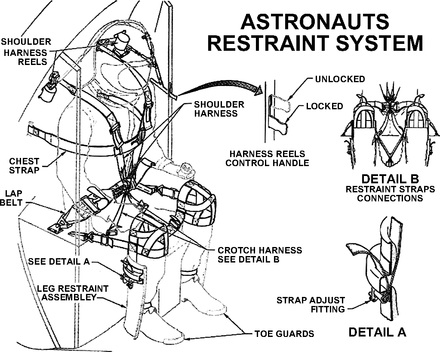Alan Shepard, the United States first man in space, was known as "The Ice Commander". I was fortunate to shake his hand at a signing of his (and Deke Slayton's) book,
Moon Shot. Lengthy holds delayed his launch atop his Redstone rocket on 5 May, 1961, and after relieving his aching bladder into his spacesuit, he told Capcom:"Let's light this candle!" And off he went. He did sign two books for me, and as he handed them to me, I said:"Admiral, thanks for lighting that candle." He fixed me with his steel-blue eyes for what seemed an eternity, then gave me a toothy grin and a wink. One of those moments one never forgets....
Here is a detailed description of Shepard's Orange Smash adventure, excerpted from
Real Clear Science:
On May 5, 1961, astronaut Alan Shepard became the first American to fly in space. He did not, however, become the first American to urinate in space, as he had already relieved himself in his spacesuit while waiting on the launch pad.
The piddle, which eventually short circuited Shepard's medical data sensors, was the result of a physiological oversight by NASA. Agency officials figured that the astronaut would be able to "hold it" for the five hours that he was suited. Due to launch delays, however, Shepard ended up spending a total of eight hours in his restrictive garb, firmly fastened to the lone seat within the Mercury capsule. There was no possible way for him to get up and use the container for liquid waste, which was supposedly located near the entrance hatch.

Before Shepard's historic mission, attempts were already underway to devise a urinary collection device for long duration flights. One of the earliest efforts was born out of the United States' U-2 program. A long-distance, high-altitude reconnaissance aircraft, the U-2, which is still in service today, flies at 70,000 feet, and thus requires its pilots to don partial pressure suits. So that the plane's pilots could relive themselves during extended flights, early versions of these suits made use of an in-dwelling catheter, "a tube threaded up the length of the penis inside the urethra and into the bladder." Urine that enters the bladder is siphoned through the tube and into a bag. As you can imagine, this was not a popular solution. Such a device evokes an indescribably awkward pain when inserted, and remains uncomfortable throughout its stay in the urinary tract.
After Alan Shepard's momentous flight, NASA hired James McBarron to oversee the efforts of B.F. Goodrich -- the company that designed the Mercury spacesuits -- to incorporate a urinary collection device. Their efforts came to fruition in time for John Glenn's 1962 orbital flight. The
device they created consisted of "a wearable containment belt, latex roll-on cuff, plastic tube, valve and clamp, and a plastic collection bag." John Glenn made good use of it, excreting a substantial twenty-seven ounces of fluid during his single space urination, a full seven ounces more than the capacity of the average human bladder.

Why such a large amount? Nerves lining the bladder sense when liquid starts to accumulate, prompting initial urges to pee when the bladder is only one-third full. But low-gravity environments throw a wrinkle in this system. As Mary Roach explained in
:
"In zero gravity, the urine doesn't collect at the bottom of the bladder. Only when the bladder is almost completely full do the sides begin to stretch and trigger the urge. And by then the bladder may be so full that it's pressing the urethra shut."Luckily, John Glenn's urinary collection device worked splendidly. Otherwise, he would have been in for a damp, disagreeable trip around the Earth.
- Ed
My uncle was President and CEO of B.F. Goodrich when that company designed and built the Mercury series space suit. Behind his desk, my uncle had hung a large oil portrait of a beautiful sky with large puffy cumuli. The brass placard beneath the painting identified it as "The Goodrich Blimp"!